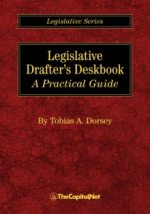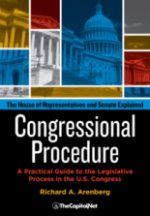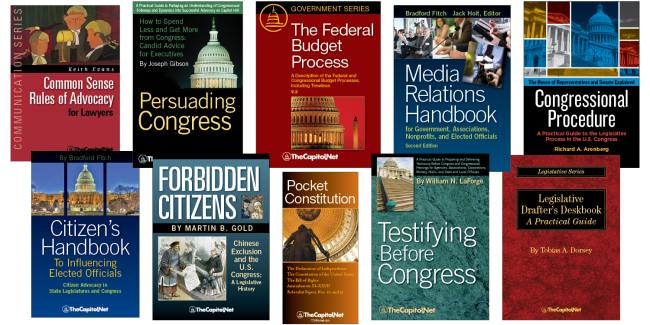From the Congressional Glossary – Including Legislative and Budget Terms
Motion to Recommit / Recommit to Committee / Table / Lay on the Table
Rep. Cartwright Motion to Recommit
Recommit: To send a measure back to the committee that reported it. A motion to recommit without instructions kills a measure; a motion to recommit with instructions proposes to amend a measure. In the House, the motion may be offered just before vote on final passage. In the Senate, the motion may be offered at any time before a measure’s passage.
In the House, a motion to recommit a measure can instruct a committee to report the measure back to the House with a specific amendment. The right to offer a motion to recommit is the prerogative of the minority party. A motion to recommit is not in order when the House is sitting as the Committee of the Whole.
After the third reading of a bill, but before the vote on final passage, a motion to recommit is in order. (The third reading is the required reading to a chamber of a measure by title only before the vote on passage.) The motion is traditionally the prerogative of a minority member to offer, providing the minority with one last opportunity to kill or amend a measure.
A member stands and says, “Mr. Speaker, I have a motion to recommit at the desk.” The Speaker then asks if the member is opposed to the measure. That member signifies that he is opposed to the measure “in its current form.” There are two types of motions to recommit. Adoption of a motion to recommit without instructions kills a measure. If such a motion is offered, it is not debatable.
A motion to recommit with instructions attempts to amend a measure. The motion normally instructs that the measure be referred to the reporting committee and that the committee “report the bill back to the House forthwith with the following amendment….” A motion to recommit with instructions is debatable for ten minutes, equally divided between the proponent and an opponent. The time is not controlled, meaning members may not yield or reserve time. At the request of the majority floor manager, the ten minutes can be extended to one hour, equally divided and controlled.
If a motion to recommit with instructions is agreed to, the measure is immediately reported back to the House with the amendment, the amendment is voted on, and the House then votes on final passage of the bill. The vote on final passage is then taken. When the results of the vote on final passage are announced, a pro forma motion to reconsider is made and laid on the table, i.e., postponed indefinitely. There is rarely a vote on these motions. To table the motion to reconsider prevents a measure from being reconsidered at a later date.
The Correct Way To Lay The Dinner Table
Table / Lay on the Table: Prevents further consideration of a measure, amendment, or motion, thus killing it.
Also see
- Amendment
- Motion to Reconsider
- Motion to Table
- § 6.140 House Floor: Motion to Recommit and Final Passage, in Congressional Deskbook
- Chapter 4.E. Privileged Business; Chapter 4.J. Motion to Recommit; Chapter 4.K. Final Passage; Chapter 5.H. Filibuster; Chapter 5.K. Filling the Amendment Tree; Chapter 5.N. Final Passage; Chapter 6.E. Conference Reports; in Congressional Procedure
More
- “Commonly Used Motions and Requests in the House of Representatives,” CRS Report RL32207 (20-page PDF
 )
) - “Floor Consideration of Conference Reports in the House,” CRS Report 98-736 (20-page PDF
 )
) - “Special Rules and Options for Regulating the Amending Process,” CRS Report 98-612 (6-page PDF
 )
) - “Procedural Distinctions Between the House and the Committee of the Whole,” CRS Report 98-143 (5-page PDF
 )
) - “Special Rules and Waivers of House Rules,” CRS Report 98-433 (5-page PDF
 )
) - “The Legislative Process on the Senate Floor: An Introduction,” CRS Report 96-548 (20-page PDF
 )
) - “The Amending Process in the Senate,” CRS Report 98-853 (40-page PDF
 )
) - “The Legislative Process on the House Floor: An Introduction,” CRS Report 95-563 (18-page PDF
 )
) - “House Committee Markups: Manual of Procedures and Procedural Strategies,” CRS Report R41083 (220-page PDF
 )
) - “House Resolutions of Inquiry,” CRS Report RL31909 (29-page PDF
 )
) - “Motions to Proceed to Consider Measures in the Senate: Who Offers Them?” CRS Report RS21255 (19-page PDF
 )
)
Courses
- Congressional Operations Briefing – Capitol Hill Workshop
- Drafting Federal Legislation and Amendments
- Writing for Government and Business: Critical Thinking and Writing
- Custom, On-Site Training
- Drafting Effective Federal Legislation and Amendments in a Nutshell, Audio Course on CD
- Congress, the Legislative Process, and the Fundamentals of Lawmaking Series, a Nine-Course series on CD
Publications

Legislative Drafter’s Deskbook: A Practical Guide

Pocket Constitution

Citizen’s Handbook to Influencing Elected Officials: A Guide for Citizen Lobbyists and Grassroots Advocates

Congressional Procedure
CongressionalGlossary.com, from TheCapitol.Net
For more than 40 years, TheCapitol.Net and its predecessor, Congressional Quarterly Executive Conferences, have been teaching professionals from government, military, business, and NGOs about the dynamics and operations of the legislative and executive branches and how to work with them.
Our custom on-site and online training, publications, and audio courses include congressional operations, legislative and budget process, communication and advocacy, media and public relations, testifying before Congress, research skills, legislative drafting, critical thinking and writing, and more.
TheCapitol.Net is on the GSA Schedule, MAS, for custom on-site and online training. GSA Contract GS02F0192X
TheCapitol.Net is now owned by the Sunwater Institute.
Teaching how Washington and Congress work ™

